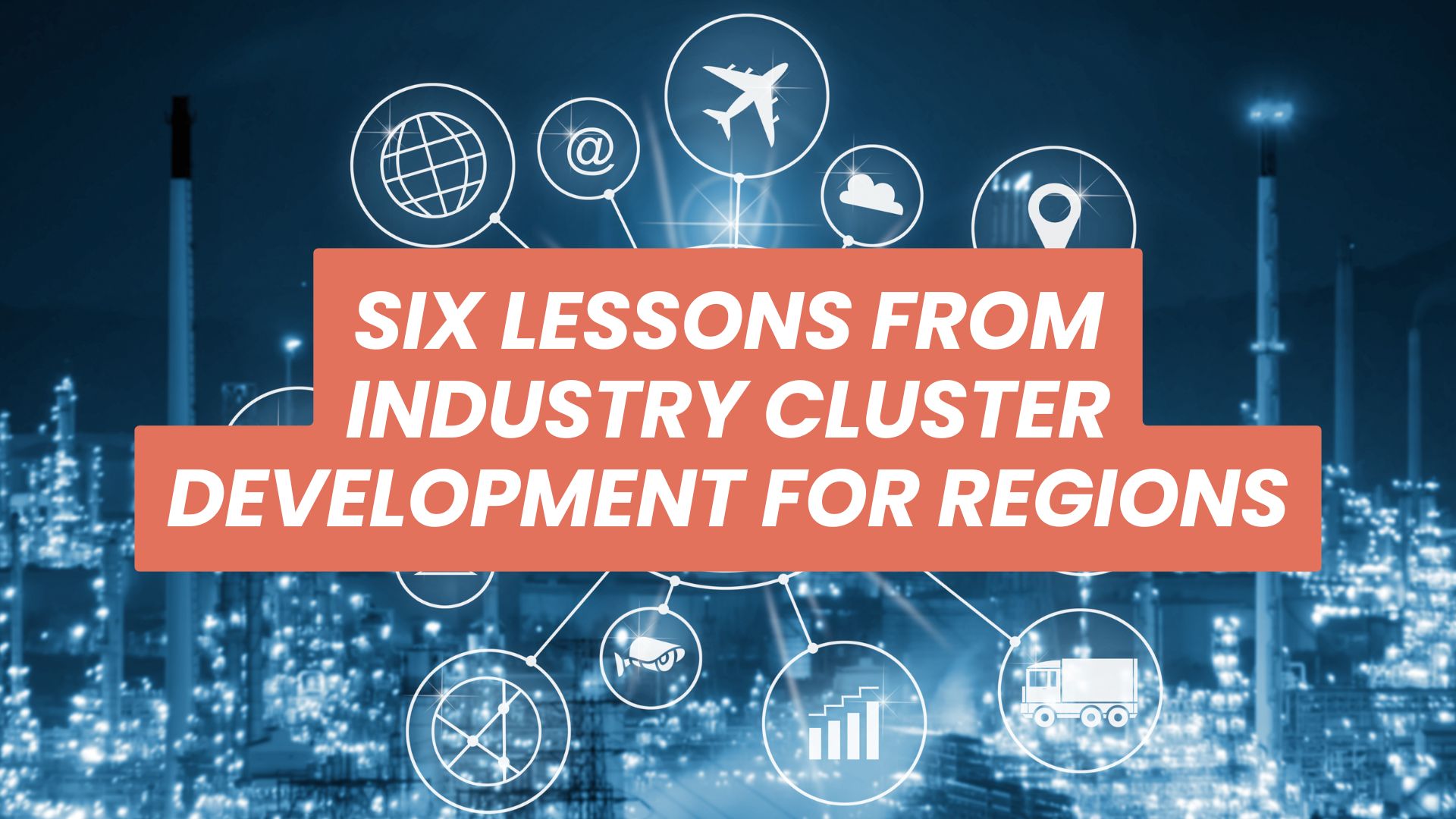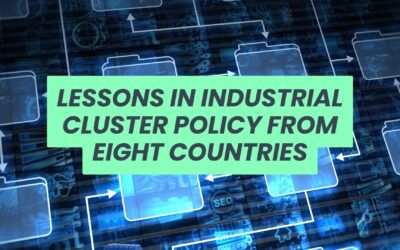What are the main lessons and best practices for industry cluster and industrial development?
Synthesizing the approaches of Ireland, USA, Canada, Denmark, France, Germany, South Korea, Japan, Singapore and the UK reveals a powerful set of common lessons and best practices for successful industrial cluster and regional economic development. While specific implementations vary based on national context, the underlying principles are highly consistent.
Key Lessons and Best Practices:
Clear, Shared, and Long-Term Strategic Vision:
Lesson: Successful cluster development is a marathon, not a sprint. It requires consistent commitment, often across multiple political cycles. Ad-hoc, short-term projects rarely yield transformative results.
Best Practice:
- Define a compelling vision: Develop a clear, ambitious, and shared vision for the cluster/region’s future, involving all key stakeholders.
- Strategic Prioritisation: Focus resources on a limited number of high-potential sectors or technological domains where a region has existing or emerging competitive advantages (e.g., Denmark’s cleantech, France’s aerospace, Ireland’s pharma). Avoid a scattergun approach.
Strong “Triple/Quadruple Helix” Collaboration:
Lesson: Innovation and growth thrive on active collaboration. No single entity can drive complex industrial development alone.
Best Practice:
- Industry-Led, but Supported: While industry should drive the agenda, robust government and academic support is crucial.
- Interlinkages: Foster deep, symbiotic relationships between businesses (of all sizes, especially SMEs), universities and research institutions, and government bodies. In some cases, civil society (e.g., NGOs, community groups) forms a “quadruple helix.”
- Professional Facilitation: Establish dedicated, professional cluster management organisations (e.g., Denmark’s cluster organisations, France’s Pôles de Compétitivité) that act as neutral facilitators, matchmakers, and project developers.
Investment in Talent and Knowledge Infrastructure:
Lesson: A skilled and adaptable workforce is the ultimate magnet for high-value industries. Innovation is fueled by cutting-edge research.
Best Practice:
- Education-Industry Alignment: Continuously align education and vocational training systems (from basic skills to advanced research degrees) with the evolving demands of cluster industries (e.g., Germany’s Dual System, Australia’s VET Industry Clusters).
- Research & Development (R&D) Ecosystem: Invest heavily in public and private R&D infrastructure (universities, specialised research institutes like Germany’s Fraunhofer, Singapore’s A*STAR) and provide incentives for collaborative R&D projects (e.g., France’s FUI).
- Talent Attraction & Retention: Implement policies to attract and retain skilled talent globally, recognizing their mobility and importance.
Enabling Business and Innovation Ecosystem:
Lesson: Clusters flourish in environments that nurture entrepreneurship, innovation, and easy access to resources.
Best Practice:
- Access to Finance: Ensure diverse funding mechanisms, from venture capital and angel investment to public investment banks (e.g., France’s Bpifrance) and targeted grants.
- Pro-Business Environment: Streamline regulations, ensure ease of doing business, and provide competitive fiscal incentives (though over-reliance on tax breaks alone is risky, as seen with some scrutiny of Ireland’s model).
- Physical Co-location (Innovation Precincts/Parks): Develop purpose-built innovation precincts, technoparks, or R&D campuses that facilitate informal interactions, shared resources, and knowledge spillovers (e.g., RTP, Singapore’s Biopolis).
Strategic Infrastructure Development:
Lesson: Modern, reliable infrastructure (physical and digital) is a fundamental prerequisite for economic activity and attracting investment.
Best Practice:
- Targeted Infrastructure Investment: Ensure transport, energy, water, and digital infrastructure (high-speed broadband) are tailored to the needs of the target clusters and are of high quality.
- Sustainability Integration: Increasingly, this includes green infrastructure, renewable energy, and support for decarbonisation efforts within industrial clusters (e.g., US IIJA/IRA, France 2030, Danish cleantech).
Regional Differentiation and Balanced Development:
Lesson: While some clusters emerge organically, deliberate policy can help accelerate growth and ensure benefits are spread. Not all clusters need to be “world-leading” in every sector.
Best Practice:
- Asset-Based Development: Identify and build upon a region’s unique existing strengths, heritage, and endowments (e.g., specific manufacturing capabilities, natural resources, academic specialisations).
- Tailored Regional Support: Recognise that different regions have different needs and stages of development, requiring customised approaches and often regional agencies to deliver support.
- Addressing Spatial Imbalances: Policies to promote more balanced regional development, often by encouraging the growth of clusters outside of traditional economic centers (e.g., South Korea’s balanced regional development, Canada’s pan-Canadian clusters).
Adaptability, Evaluation, and Learning:
Lesson: Economic landscapes are dynamic. Policies must be agile and responsive to global trends, technological shifts, and market changes.
Best Practice:
- Continuous Monitoring & Evaluation: Implement robust, independent monitoring and evaluation frameworks to assess cluster performance, identify gaps, and measure impact.
- Data-Driven Decision Making: Utilise economic data, cluster mapping, and foresight studies to inform policy adjustments and identify emerging opportunities.
- Willingness to Adapt: Be prepared to evolve or even discontinue less effective programs, and to pivot towards new strategic priorities (e.g., RTP 3.0, France’s cluster consolidation, Australia’s VET reforms).
- International Benchmarking: Actively learn from and benchmark against successful cluster initiatives globally.
In conclusion, successful industrial cluster and regional development is rarely accidental. It results from a deliberate, long-term strategic vision, fostered through extensive collaboration across public, private, and academic sectors, underpinned by significant investments in talent, research, and infrastructure, all within a flexible and continuously adapting policy framework.




